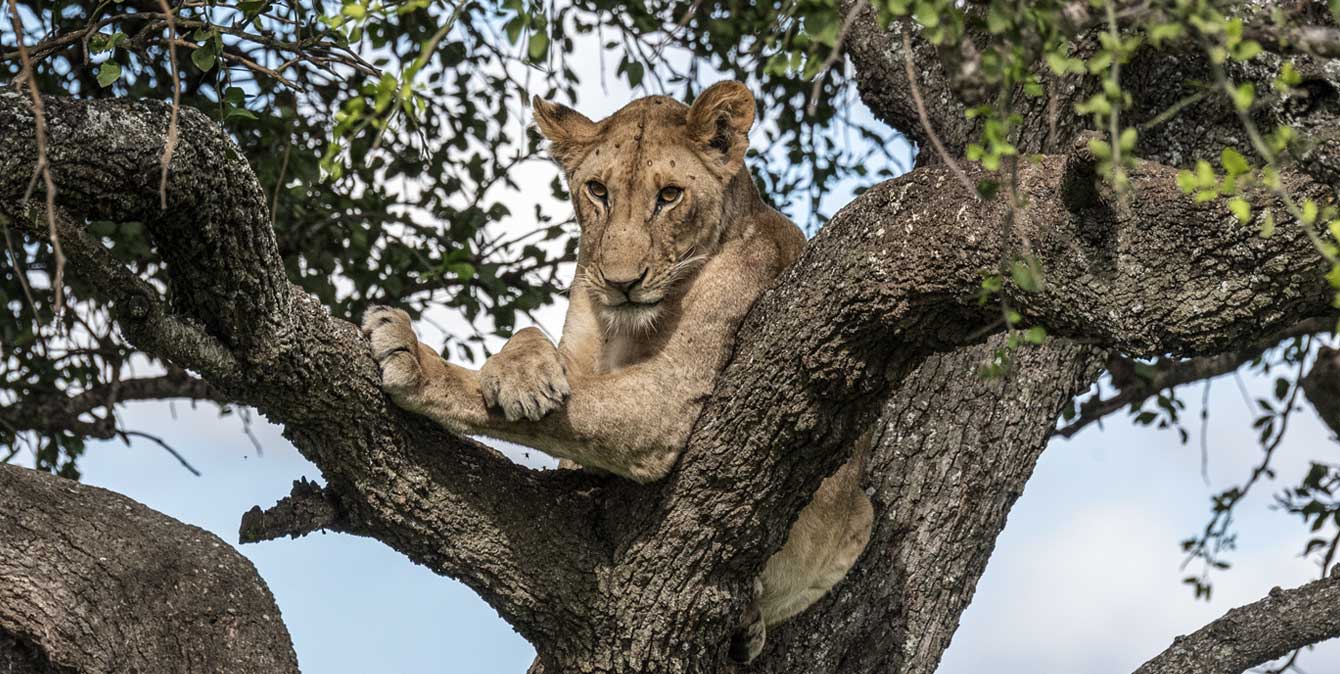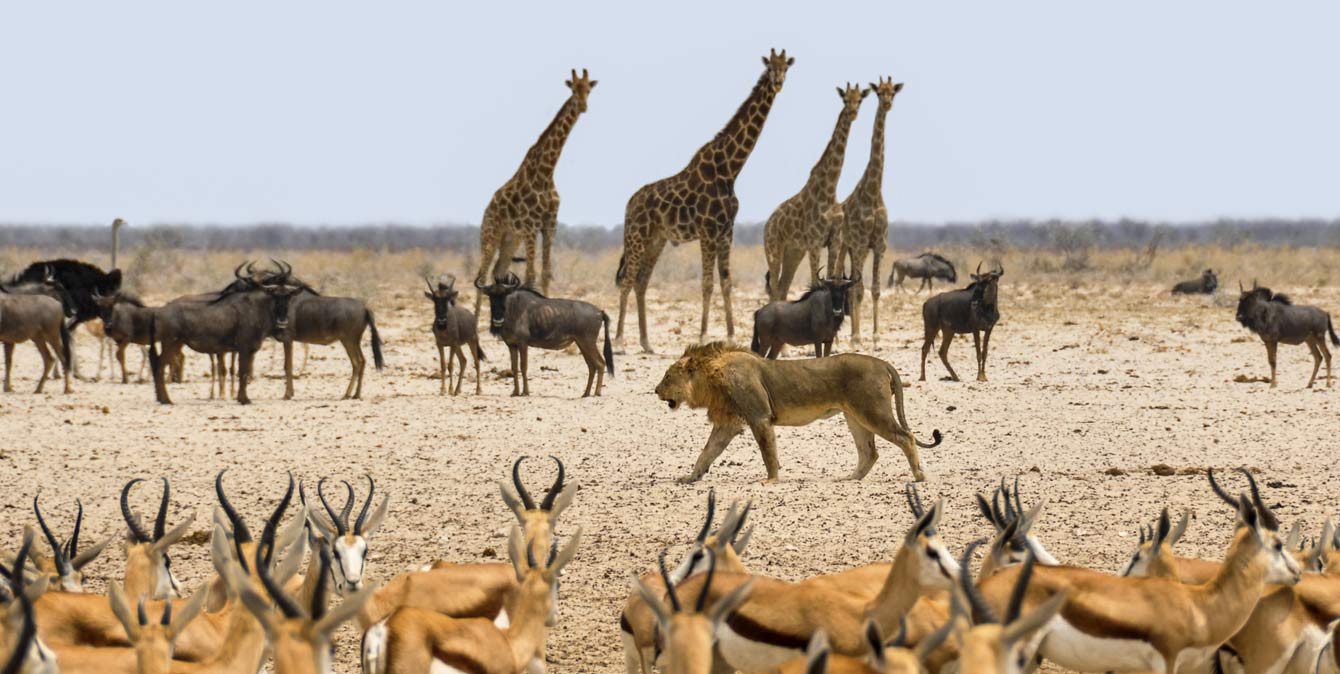Is it worth visiting Lake Manyara National Park?
Have you ever been on safari to the Lake Manyara National park? Although it is Tanzania’s smallest park, Lake Manyara is one of the most diverse reserves in the country. The beautiful Lake Manyara covers two-thirds of the park, while the rest consists of steep mountainside, swamps, dense woodlands, open grassy areas, and hot springs. However, we need to justify why going on a lake Manyara safari is worth to any traveller wishing to go on a Tanzania safari.
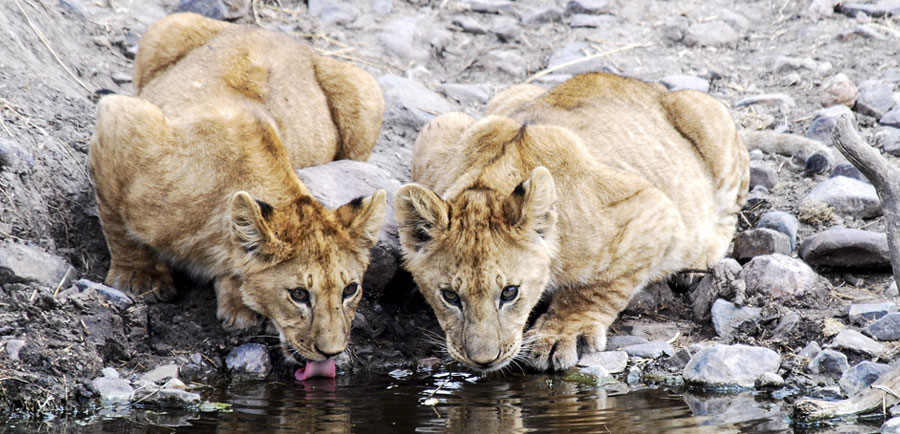 Lake Manyara is easily accessible by both air and good tarmac from Arusha; due to its strategic location, going on Lake Manyara safari can be done as a day trip or it can be included to a much larger multi-day North Tanzania safari program visiting other parks such as Serengeti, Ngorongoro or Tarangire.
Lake Manyara is easily accessible by both air and good tarmac from Arusha; due to its strategic location, going on Lake Manyara safari can be done as a day trip or it can be included to a much larger multi-day North Tanzania safari program visiting other parks such as Serengeti, Ngorongoro or Tarangire.
Ernest Hemmingway called Manyara the loveliest lake he had seen in Africa. And he might have been right. Stretched out at the base of the mighty Rift Valley escarpment, with shorelines coloured pink by thousands of flamingos and great game viewing in a small area, it is a true African gem indeed.
10 Reasons you should go on a Lake Manyara Safari
Easy Access
To enjoy a Lake Manyara safari tour, you don’t have to drive for many hours on unbearable roads to reach the park. Once you’ve entered one of lake Manyara main gates, there’s an excellent network of sealed and well-maintained gravel roads, enabling a driver of the humblest car to see the wildlife.
The Lake Manyara National Park is easily accessible, as you can travel by road or air; it’s a 2-hour drive on a good tarmac road from Arusha. The park can also be accessed by air on scheduled flights from Arusha, Zanzibar, or Dar es Salaam. Charter flights also access the reserve for groups and high end travellers.
The Amazing Wildlife
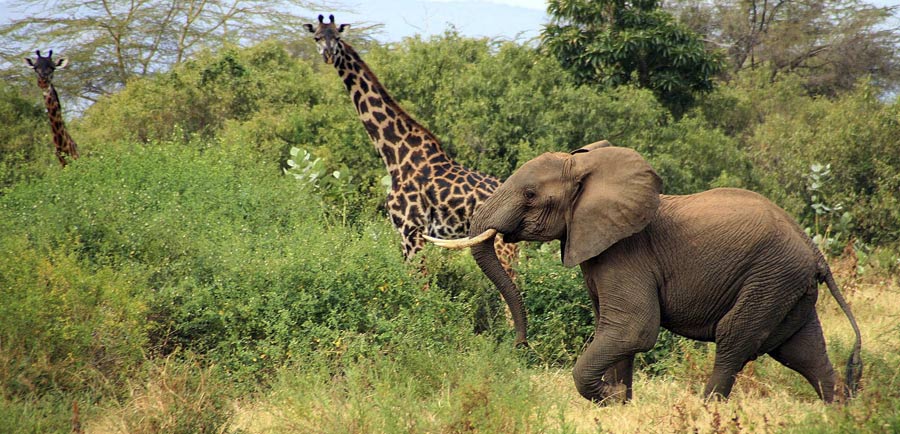 Lake Manyara national park is home to an amazing variety of animals considering its small size. A short lake Manyara safari to this serene park will greatly diversify your Tanzania safari experience as the lush green jungle habitat is of stark contrast to the other parks you will visit during your safari in Tanzania.
Lake Manyara national park is home to an amazing variety of animals considering its small size. A short lake Manyara safari to this serene park will greatly diversify your Tanzania safari experience as the lush green jungle habitat is of stark contrast to the other parks you will visit during your safari in Tanzania.
Lake Manyara is a beautiful little park and is well known for its tree-climbing lions, elephants and Primates such as vervet monkey and large troops of baboons; the park boasts one of the highest concentrations of baboons in Africa.
Other resident herbivores that you will likely encounter include hippo, giraffe, wildebeest, buffalo, warthog, impala and carnivores include lion and leopard.
The Biodiversity
Although only a third of the park consists of dry land, Lake Manyara national park boasts a higher diversity of plant and animal species than the far larger Serengeti national park.
Lake Manyara national park features an incredible wealth of habitats, from soaring groundwater forest to acacia tortilis woodland, a tranquil soda lake, bubbling hot springs, and the steep escarpment of the Rift Valley. The Great Rift Valley is at its most impressive here, with a precipitous drop of about 500 m (1 600 feet) to the flamingo-rimmed lakeshore.
In just a two-hour round trip lake Manyara safari into the park, it is possible to see all the main highlights in the groundwater forest and the floodplains leading up to the lake.
The Bird Watching
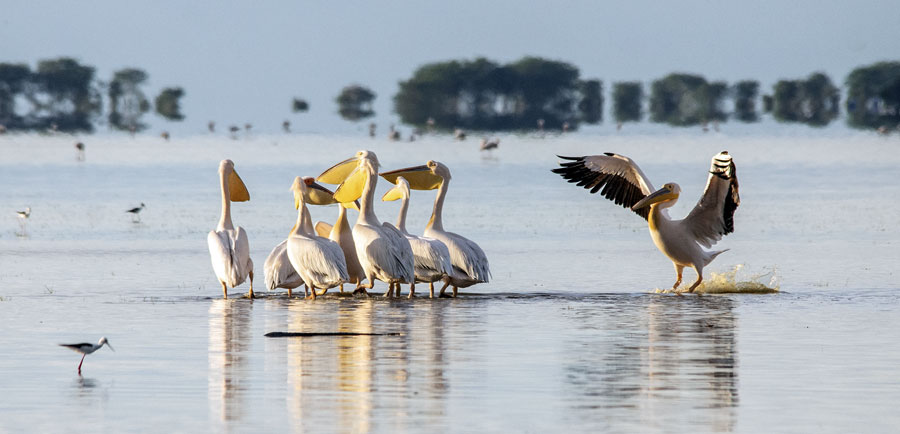 It is commonly said that Lake Manyara is one of best the parks in Africa for birdwatchers. If you are a bird-watching enthusiast, then going on a lake Manyara safari is a must on your Tanzania safari program.
It is commonly said that Lake Manyara is one of best the parks in Africa for birdwatchers. If you are a bird-watching enthusiast, then going on a lake Manyara safari is a must on your Tanzania safari program.
With over 350 species of birds including migratory birds, even the most seasoned bird enthusiast will not be disappointed. The lake itself attracts thousands of pink-hued greater and lesser flamingos on their perpetual migration along with many other aquatic species. Two of the more interesting species commonly seen are the long-crested eagle and the grey-headed kingfisher
Other fascinating species spotted in and around the soda lake include pelicans, Egyptian geese, ducks, waders, herons, storks, grebes, ibises, kingfishers, and many more. The extraordinary concentration of birdlife has made this place world-renowned among ornithologists.
The Conservation Efforts
Lake Manyara national park is Tanzania’s second-oldest park established in 1960. Made famous by elephant researcher, drain Douglas Hamilton in his book, ‘among the elephants’.
Manyara was established specifically to protect the vast elephant herds that have made the area world-renowned. Even though heavy poaching in the 1970’s and 1980’s decimated the herds, the elephant herds are now recovering and returning to their former strengths.
So Many Safari Activities
 Lake Manyara national park is one of the few reserves in Tanzania that offer a variety of safari activities in and around the park; these include canoeing when the water level is sufficient, game drives (day and night), abseiling and forest walks on the escarpment outside the park, bird watching, bush meal and several cultural programs at Mto wa Mbu.
Lake Manyara national park is one of the few reserves in Tanzania that offer a variety of safari activities in and around the park; these include canoeing when the water level is sufficient, game drives (day and night), abseiling and forest walks on the escarpment outside the park, bird watching, bush meal and several cultural programs at Mto wa Mbu.
The rugged escarpment that forms its other border is almost primordially beautiful, rising high above the plains festooned with lush forest. Guests can ride a bicycle along the lakeshore and visit a local village on cultural tours or while away the days roaming the park on day and night game drives.
Lake Manyara National park is a year-round destination with a sighting for all seasons.
Watching wildlife in Lake Manyara National Park is good all year. The dry season between June and October is best for wildlife viewing, game is easier to spot and sightings are often incredible, especially around the water sources. The wet season between November and May gets the park scenic, the vegetation is lush and waterfalls cascade down the escarpment.
All through the year, it is very easy to spot wildlife in the park, but it is usually best during the dry season, in the months of July to October which is the best for large mammals, whereas the best time for birds is the wet season, between November to June.
You can go with a guide or drive yourself
While there are pros and cons about going on a self-drive lake Manyara safari, the game viewing tracks in the park are very easy to identify and since the park is quite small, spotting wildlife on your own is quite easy.
We however, recommend using a guide during your safari to Lake Manyara as this will maximise your game viewing experience by tapping into your guide’s knowledge on the flora and fauna of this beautiful park.
A growing population of tree-climbing lions
 Lake Manyara’s thick forests are a unique and surprising habitat for sightings of lion, which are known to climb and lounge in the trees, as well as hunting on the grassy shores of the lake.
Lake Manyara’s thick forests are a unique and surprising habitat for sightings of lion, which are known to climb and lounge in the trees, as well as hunting on the grassy shores of the lake.
Don’t forget to look up during your lake Manyara safari; the narrow belt of acacia woodland is the favoutite playground on Manyara’s tree resting lions – the reason behind this peculiar behavior remains a mystery even today.
The affordability of Lake Manyara safaris
Lake Manyara national park remains considerably more affordable as a safari destination than many of its regional contemporaries such as Serengeti or Ngorongoro.
There are various budget accommodations around the park that are good value for money and have plenty of amenities, while even some of the more luxury offerings shouldn’t break the bank. You can also save money by self-driving or visiting the park on a day trip lake Manyara safari starting from Arusha or Moshi town.
Perfect for day visitors wishing to get a taste of Tanzania safari
Lake Manyara National Park provides the perfect introduction to Tanzania’s wildlife. Due to the location of the park, one can easily go on a day trip to Lake Manyara that can start from Arusha or Moshi. This 1-day safari to Lake Manyara offers a perfect opportunity to wildlife enthusiasts who would like to go on a short safari break to the bush.
Conclusion on Lake Manyara Safaris
Game viewing is generally fair to good in Lake Manyara at any time of year. However, Lake Manyara does not offer the abundance of wildlife nor quality of wildlife viewing experiences found in the other parks of Northern Tanzania. Seasonal wildlife patterns are not significant enough to warrant tailoring your itinerary during any specific month of travel.
We find that a quick day visit to Lake Manyara before between the Crater and Kilimanjaro/Arusha or the Crater and Tarangire is sufficient and ideal for most travelers. The park gate is just a few feet from the main road and this combined with the fact that the park is small allows for quick and rewarding forays into the park. In addition, the majority of the wildlife found in the park is usually located in close proximity to the park gate. A one to four-hour visit to Lake Manyara makes a superb addition to any safari itinerary.

